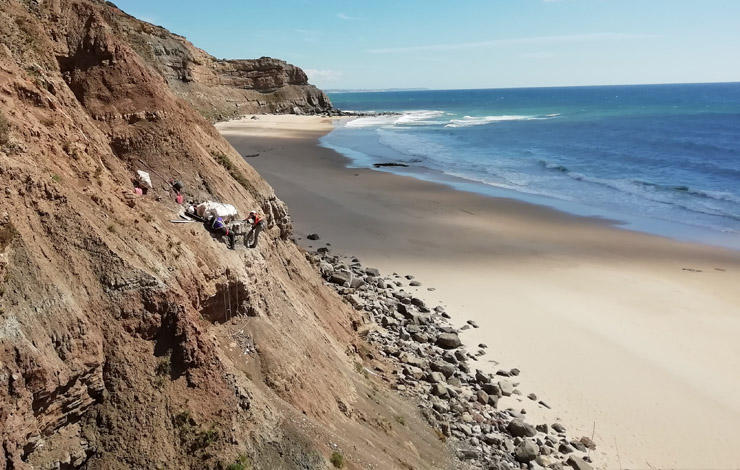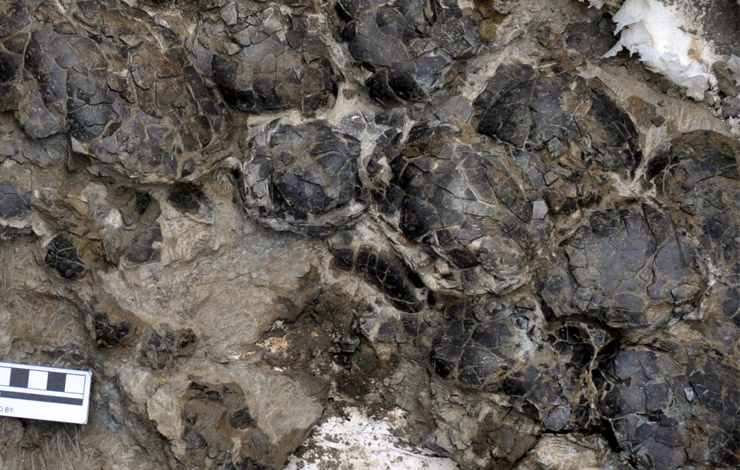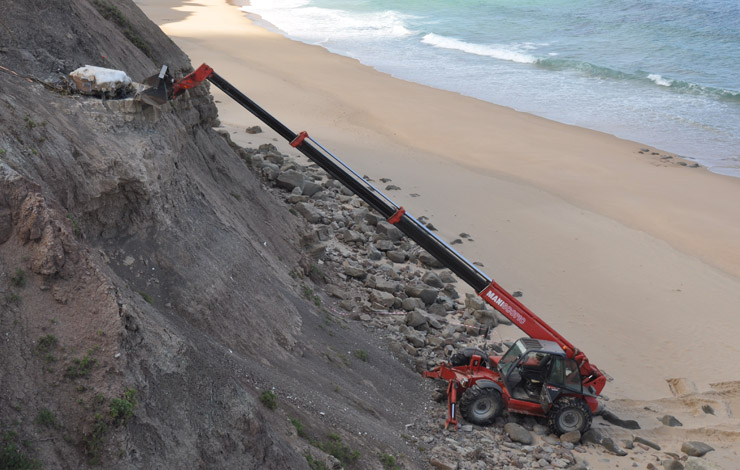18-06-2019

The excavation campaigns of a large carnivorous dinosaur nest, discovered at Praia do Caniçal in Lourinhã, which is presumed to be of the species Lourinhanosaurus antunesi, ended on Saturday, June 15. If confirmed, this is the fourth nest to fit the collections of the Museum of Lourinhã and to be found in this area.
The nests previously discovered, in the localities of Paimogo, Peralta and Casal da Rola, have the same characteristics: eggs of about 12 centimeters in a great accumulation that can reach the hundred eggs, black barks of about one millimeter of thickness, with pores that help the identification of the dinosaur. With 152 million years, these are also the oldest dinosaur nests in Europe. Paleontologists still do not know the reason for discovering so many eggs of this species in the region, but one thing is certain: this seemed to be the ideal place for the Lourinhanosaurus to nest.
The excavations organized by the Museum of Lourinhã, counted on the scientific coordination of FCT NOVA, as well as with the financial support of this institution through the project XTaleggs, and by the Dino Park of Lourinhã, through the financial contribution for the entrance of the visitors.
This time, the nest was halfway up the coastal slope, making it difficult to dig. The first egg shells, fallen at the base of the slope, were discovered in 2017. Access was only possible through ropes, making it impossible to extract them immediately. The eggs are found in a huge stone block of about a ton that was removed with the aid of a 17-meter crane that had to descend to Praia do Caniçal. Excavations began as early as 2017 where the nest was being collected over three summer campaigns.
Paleontologists still do not know whether the nests of Lourinhanosaurus were community-dwelling, with several females laying eggs in the same place, as the high number of eggs seems to suggest. The existence of embryos, known as Paimogo and Peralta, are not yet confirmed in this new nest.
The excavations involved students and volunteers from ten different nationalities who took the opportunity to learn paleontology techniques in Lourinhã, guided by FCT NOVA professionals Miguel Moreno Azanza, Octávio Mateus and Eduardo Puértolas-Pascual.
The cliffs of Lourinhã Municipality are a frequent destination of field visits organized by the Museum of Lourinhã, now with one more story to tell. The block with the eggs will be prepared in the laboratory of Dino Parque da Lourinhã, being gradually exposed as excavated, in a process visible to the visitors.


More about our Department of Earth Sciences